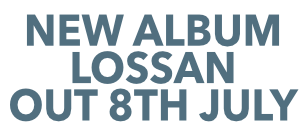
Folk Radio UK (August 2016)
Ruth Keggin is one of a growing number of Isle of Man natives dedicated to ensuring that the traditional songs, stories, and melodies of the island are kept alive. Her 2014 début album, Sheear, proved that Manx Gaelic, despite being declared officially ‘extinct’ by UNESCO in 2009, continues to grow and thrive, along with the oral and musical traditions it has nurtured. In July Ruth released her second album, Turrys (Journey), in which she and her band weave wonderful music from the traditions of her home – and beyond.
Turrys opens with a song from Manx songwriter Bob Carswell, Irree Ny Greiney (Sunrise). A beautifully soft guitar from David Pearce introduces Ruth’s light, flawless and instantly engaging voice. Through a melody that soothes like a lullaby, this song of a sunlit sea gets Turrys off to a fine start. Another of Bob’s songs, Ushag Varrey(Sea Bird), is given a more overtly contemporary outing, with maritime sound samples and effects adding an air of mystery to the guitar and the soft, tumbling vocal of the song. Ruth’s sleeve notes tell us that those samples were recorded off Ardnamurchan on Scotland’s west coast – one of many Scottish connections on the album.
The Isle of Man’s position in the Irish sea affords clear views of both Ireland and Scotland, and the ancient political, musical and linguistic links between the three are kept alive in Ruth’s music. Heeym Yn Geurey is a Manx translation of Rory and Calum MacDonald‘s (Runrig) Chi Mi’n Geamhradh. Something of the Hebridean tradition clearly rubbed off. In this reflective and sorrowful song Ruth’s voice is to Manx Gaelic what Karen Matheson is to Scots; the quality and clarity highlighted by an exquisite flute. Those Scottish links go deeper yet. The album was recorded at Nick Turner‘s Watercolur Studio at Ardgour, near Fort William, where Ruth has previously worked with Nick and Mary Ann Kennedy on the Scots/Manx Gaelic project Aon Teanga:Un Çhengey(One Tongue). Heeym Yn Geurey was chosen to close FRUK’s recent Watching The Horses mix (http://www.folkradio.co.uk/2016/07/watching-the-horses-mix/).
Ruth’s vocals continue to bring something special to the album. As the traditional Carval races along like a rip tide towards the joyful vocal/concertina duet of Turrys (inspired by a night time sea voyage from Iona to Mull), Ruth’s voice echoes the achievements of Jacqui McShee and Maddy Prior, lifted yet further by David Pearce‘s vocal. A similar spirit inhabits the a cappella opening of Tra Va Ruggit Creest, leading to light jazz influences and harmonising flutes.
There’s also, of course, a wealth of Manx tradition for Ruth to draw on. The traditional courting song, Arrane Sooree‘s gently skipping melody on bass, guitar and flute bookends a jig written by Ruth and guitarist, David Pearce, who provides some subtle and quietly discordant strings, while Venessa Hutchinson‘s double bass takes on the melody; a regular feature that adds an appealing richness to the album. Mish As Y Keayn comes from Ruth’s early days with the Manx Gaelic choir – Caarjyn Cooidjagh (Friends Together). Flitter Dance, inspired by a Manx limpet-catching tradition, comes across like a waulking song and features a brace of flutes from Ruth and concertina player Eoghan Ó Ceannabháin.
That same pairing graces the perfectly paced Irish tune set, Napoleon’s Chanter; and there’s even a hint of Americana with Little Red Bird in the Pines, inspired by the similarities between the Manx traditional melody Little Red Bird, and the 19th Century American song In The Pines.
Ruth Keggin‘s passion for bringing traditional Manx songs and melodies to a wider audience shines through onTurrys. The contemporary nuances are enriched by Vanessa Hutchinson‘s imaginative double bass, as well as Ruth and Eoghan Ó Ceannabháin‘s uplifting flute duets; and David Pearce combines soft finger style with gently percussive guitar. And all through Turrys, Ruth’s voice is clear, precise and a joy to hear.
Neil McFadyen
